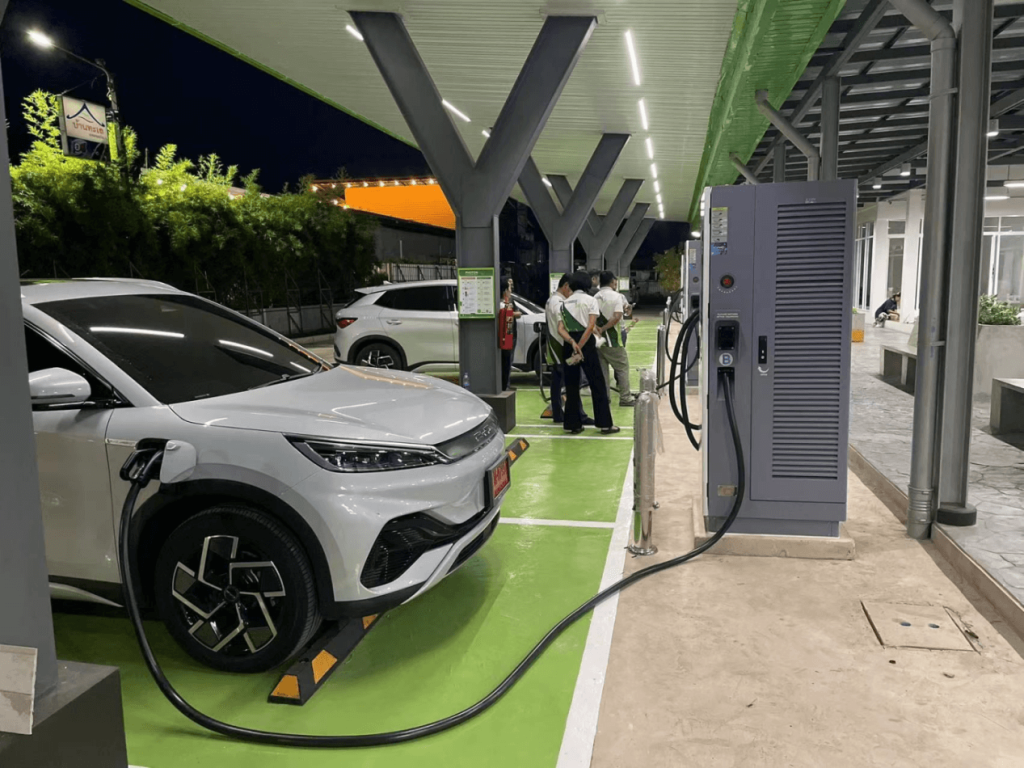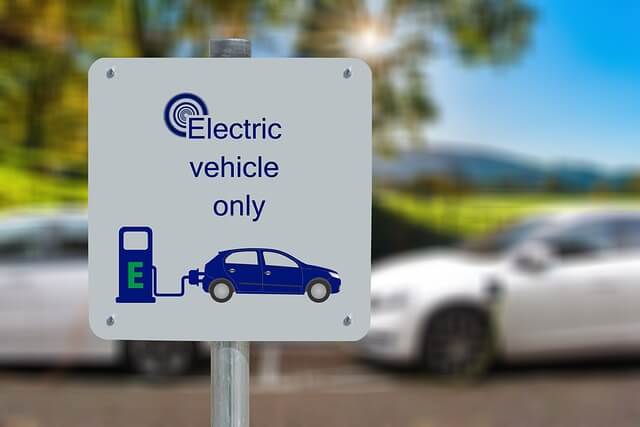
Products
Fast, Reliable, Everywhere

Solutions
Efficient, Innovative EV Charging Solutions.
News
We are committed to the innovation and application of EV charging.
As electric vehicles (EVs) become more common, the importance of public electric vehicle charging stations is increasingly apparent. To make the most of these charging facilities, it is crucial to understand how to use them correctly and to follow proper etiquette. This article provides detailed tips and guidelines to help you use public electric vehicle charging stations efficiently and enhance your charging experience.
Whether you're driving in the city or planning a road trip with your EV, finding a convenient charging station is essential.
Fortunately, various charging network apps and vehicle navigation systems can help you locate nearby public electric vehicle charging stations with ease.
These tools can search for stations based on connector types, charging speeds, or proximity to other locations like hotels. They also provide real-time information about the availability of charging stations and their compatibility with your vehicle.
For electric vehicle charging stations in the U.S. and Canada, you can browse this link.
For additional resources, check out apps that can help you find the nearest EV chargers here.
Example: Using Google Maps to Find a Charging Station
Search Example: Locate public electric vehicle charging stations near Kansas City Ice Rink.
Steps:
1.Search for charging stations around the Kansas City Ice Rink destination and narrow the search to a convenient distance from the destination.
2.Type "electric vehicle charger" into the search bar and execute the search.
3.The pins and details for all charging stations will appear in the sidebar.
1.Park Your Vehicle Correctly
Park your vehicle properly in the designated charging spot. These spots are designed to ensure a secure connection between your vehicle and the charging equipment. Proper parking helps prevent the charging cable from being overstretched or damaged, ensuring a stable charging process. Parking in the designated area also reduces safety risks during charging, such as avoiding accidental collisions with other vehicles and protecting the charging equipment.
2.Connect the Charging Cable to the Vehicle’s Charging Port
Locate the Charging Port: Find the charging port on your electric vehicle, which is typically located at the front, side, or rear of the vehicle. The exact location can vary depending on the vehicle model.
Prepare the Charging Cable: Ensure the charging cable is compatible with the charging station and select the appropriate type(e.g., Type 1, Type 2, CHAdeMO, or CCS) as needed.
Remove the Charging Cable: Take the charging cable from the charging station and check that it and the connector are clean, undamaged, and free of debris.
Inspect the Charging Port: Ensure the vehicle’s charging port is clean and free of dust or debris.
Note: Different countries may use different types of cables and plugs . Check the type used in your area.

3.Follow the Instructions on the Charging Device’s Screen
This may involve using a membership card, mobile app, or contactless payment method.
Once your vehicle is connected to the charging station, you can begin charging.
Most public electric vehicle charging stations allow you to monitor the charging progress via the device’s display or a mobile app.
This helps you track how much power has been delivered to your vehicle and how much time remains until the battery is fully charged.
1.Avoid Peak Hours
2.Consider Charging Needs
3.Utilize Electricity Pricing and Policies
Charging Network Discounts: Networks like ChargePoint and EVgo often provide promotions, such as waiving initial charging fees or offering discount vouchers.
Occasionally, governments or charging networks offer discounts or incentives to encourage charging during specific times.
For example, California utilities like PG&E and SCE offer time-of-use pricing incentives for EV charging, encouraging owners to charge during off-peak hours (e.g., nighttime).
Time-of-Use Discounts: PG&E offers the “EV Rate” plan, which includes two types of time-of-use pricing:
“EV2-A” Plan: Prices are divided into peak (4 AM to 9 AM, 4 PM to 9 PM) and off-peak hours (9 PM to 4 AM). Off-peak rates are lower, potentially about 50% less than peak rates.
Peak rates might be $0.30/kWh, while off-peak rates are $0.15/kWh.
TOU-D Plan: SCE offers a “TOU-D” plan with pricing divided into peak, mid-peak, and off-peak periods:
Off-Peak Hours: Typically 8 PM to 8 AM, with the lowest charging prices.
Off-peak rates are usually 40%-50% lower than peak rates. For example, peak rates might be $0.35/kWh, while off-peak rates are $0.20/kWh.
Discounts during off-peak hours are usually 30%-50% lower than peak times. The exact discount depends on the utility and pricing plan.
1.Avoid Overcharging
Charge to 80%: Aim to charge the battery to around 80% rather than fully charging it. Charging close to 100% involves higher voltage, which can negatively impact battery health.
Set Charging Targets: Many EVs and charging network apps allow you to set charging targets to avoid overcharging.
2.Avoid Deep Discharging
Maintain 20%-80% Charge Range: Avoid letting the battery level drop close to 0%, as deep discharging can accelerate battery degradation.
Regular Charging: Keep the battery level between 20%-80% to help extend battery life.
3.Choose Appropriate Charging Speed
Use Fast Charging Cautiously: Although fast charging (e.g., DC fast charging) is convenient, frequent use can stress the battery. Use slower charging speeds (e.g., Level 2 charging) when possible, unless in urgent situations.
Avoid High-Temperature Charging: If possible, avoid fast charging in high temperatures, as heat can increase the battery's thermal load and affect its lifespan.
Using charging network apps at public electric vehicle charging stations can significantly enhance charging efficiency and convenience.

1.Start and Stop Charging
Remote Control: Apps allow you to start and stop charging remotely, which is useful in extreme weather conditions, as you can control charging from inside your car.
Payment Function: Use the app to pay for charging fees. Most charging network apps support contactless payment, making transactions easy and quick.
2.Check Charging Station Status
Real-Time Information: View the real-time status and availability of charging stations. Apps usually provide information on each station’s occupancy, helping you avoid full stations.
Device Status: Get information about the charging equipment’s status, including whether it is working properly or if there are any faults or maintenance issues.
3.View Charging Costs
Cost Estimates: Apps often show estimated charging costs, including the price per kilowatt-hour and total fees, helping you understand costs before charging.
Cost Records: Record and review charging history to track expenses and plan accordingly.
4.Get Charging Station Feedback
User Reviews: Read reviews and ratings from other users to gauge the quality of the charging station’s service and the reliability of the equipment.
Report Issues: Report any problems with the charging equipment to the charging network operator through the app to help them address issues promptly.
Public electric vehicle charging stations are a shared resource. Once your vehicle is fully charged, promptly move it to allow others to use the charging station.
If you are not charging, avoid using the charging spot as a regular parking space.

If you encounter any issues with the charging station, such as equipment malfunctions or safety concerns, report these problems to the charging station operator or through the charging network app.
Public electric vehicle charging stations provide convenient and reliable charging solutions for electric vehicle owners. By understanding how these stations work, mastering usage tips, and following proper etiquette, you can enhance your experience while using them.
As an innovative energy company, we are committed to offering high-quality energy solutions to help you better adapt to the era of electric vehicles. If you have any related energy needs or questions, please contact us. We will provide you with professional support and services.
